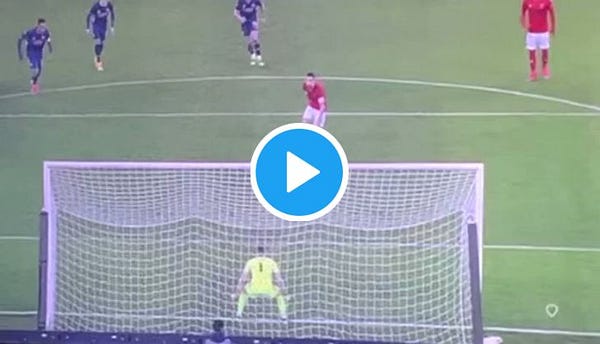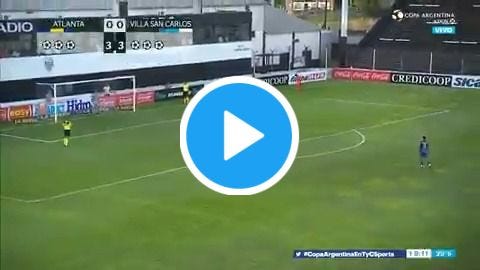Is it better to aim high or low when it comes to penalties? It’s a question I’m often asked and I usually reply with a facetious answer: “You can kick the ball too high but you can’t kick it too low.” We now have a better answer, thanks to Portuguese academic Carlos Almeida. He studied the height of 536 penalties taken in Champions League and Europa League over a five-year spell and came up with some interesting findings.
Almeida wanted to focus on the patterns of regular penalty-takers in normal game-time, so no penalties in extra-time or shoot-outs were considered. Of the total, 76 per cent of the penalties were scored, 19 per cent saved and five per cent missed the target.
Almeida and his co-authors divided the goal into eight zones: top right-corner, bottom right-corner, high right, low right, high left, low left, and top left-corner, bottom left-corner. They then calculated how many penalties went where, as you can see from the image below:
Overall, the highest conversion rate came in the top corners (Zones 5 and 8) and the lowest conversion came from low shots that were central. Twenty-five per cent of all the penalties were kicked high and of those, 82 per cent were scored. Seventy-five per cent in total were aimed low, of which 74 per cent were scored. Let’s just repeat that:
High penalties - 82 per cent conversion
Low penalties - 74 per cent conversion
Perhaps I need to change my response to: “You can kick the ball too high, but if you go low, you can also kick it too close to the goalkeeper.”
One finding was clear: the idea that shooting in the middle of goal is the best strategy is a myth. The middle of the goal is the zone where goalkeepers saved the most penalties. The top-corner zones are where goalkeepers saved the fewest penalties.
Almeida and his colleagues also broke up the data into footedness. In his study, right-footers had a slightly better conversion rate than left-footers but not enough to be statistically significant. This is in keeping with lots of studies on footedness; I have heard lots of chat that lefties aren’t as effective, but nothing in the numbers suggests that is true. There were some interesting insights to glean from the footedness numbers:
Let’s look at left-footers first (note: the term natural side means a left-footer kicking across their body to the goalkeeper’s left, or a right-footer kicking across their body to the goalkeeper’s right):
Left-footers:
24% kicked high - 73% conversion
76% kicked low - 69% conversion
55% kicked to natural side - 63% conversion
45% kicked to non-natural side - 80% conversion
Right-footers:
25% kicked high - 84% conversion
75% kicked low - 75% conversion
61% kicked to natural side - 76% conversion
39% kicked to non-natural side - 77% conversion
Almeida’s study shows that more right-footers kick to their natural side than lefties, and right-footers kicking high are more likely to score than lefties kicking high. “It was new and surprising for us to see that left-footed players were not as effective in shooting to their natural side,” said Almeida, himself a left-footed penalty-taker with a respectable conversion rate of around 70 per cent.
He also looked into elapsed match time when penalties are taken and found an anomaly:
Minute 1-30 - 79 per cent conversion
Minute 31-60 – 71 per cent conversion
Minute 61-90 – 78 per cent conversion
This is a significant finding, and another surprise. “We were expecting conversion rates to drop towards the end of the match due to fatigue and increased psychological pressure where score-line can be decided with one goal,” said Almeida. “But that did not happen and we can call this drop significant.”
Finally: a shout-out to the three goalkeepers who saved penalties shot in Zone 8: Twente’s Nikolay Mihaylov keeping out Spurs midfielder Rafael Van der Vaart in September 2010; Wojciech Szczesny for Arsenal, stopping Udinese’s Antonio Di Natale in August 2011; and Maccabi Haifa’s Bojan Saranov saving PAOK’s Miroslav Stoch in August 2013. Impressive!
Thanks to Mourad Amraoui for alerting me to this paper. And thanks to Carlos for sharing these results and allowing me to share his graphics. The full paper is here: Almeida, C. H., Volossovitch, A., & Duarte, R. (2016). Penalty kick outcomes in UEFA club competitions (2010-2015): The roles of situational, individual and performance factors. International Journal of Performance Analysis in Sport, 16(2), 508–522.
PEN PALS
Penalty hero of the week is Adelaide United’s Tomi Juric, who scored a hat-trick of penalties – two of which came after controversial VAR decisions – in the dramatic 3-2 win over Central Coast Mariners. Juric hadn't scored a penalty for over two years so I was fascinated to see what decisions he took. His strategy is GK-Independent, right-footed, and on all the penalties he goes the same way: to his non-natural side, first low, then high, then low again. Terrific Tomi!
A penny for the thoughts of Gonzalo Coronel today. He took this spot-kick on Sunday for Argentine club Atlanta in the Argentine Cup shoot-out against Villa San Carlos. If you thought Rony’s run-up last week was interesting, this one is different level. (Thanks Alex for spotting this!)
Someone must have sent Rangers striker Borna Barisic the memo on high penalties. In the last minute, he took this penalty to secure a 4-3 away win over Royal Antwerp in the Europa League. This was pure GK-Independent and never in doubt. Barisic even checked that the keeper was okay afterwards – how kind!


Benfica forward Juan Antonio Pizzi scored against Arsenal from the spot, and he’s now 7/7 from penalties this season. But his task looked a little easier than usual according to goalkeeping supremo David Preece, who spotted Bernd Leno jumping on his line just as Pizzi made contact. Leno has saved 2/16 penalties in the Premier League. Surely this is not an optimal strategy for a goalkeeper?


Cardiff goalkeeper Dillon Phillips saved a penalty from Preston’s Paul Gallagher at the weekend. From the rebound, Gallagher was fouled and another penalty awarded. This time, Ched Evans stepped up for Preston and… Phillips saved it again. His technique for the first penalty is to stand on one side of the goal, and he dives in different directions to make the saves. Check it out!


Please share any penalty thoughts or further questions to me either by commenting below or at @benlyt.
If you enjoyed this post, please spread the word about Twelve Yards and share this with your network. And if you’re new, you can see recent pieces including: the great Ederson penalty debate, a fascinating interview with Antonin Panenka, how to define a true Panenka, how to end Antoine Griezmann’s run of five missed penalties in a row, penalty records in empty stadia, and Barcelona’s first shoot-out win in 23 years. Thank you!
Ben Lyttleton is the author of Twelve Yards: The Art and Psychology of the Perfect Penalty








